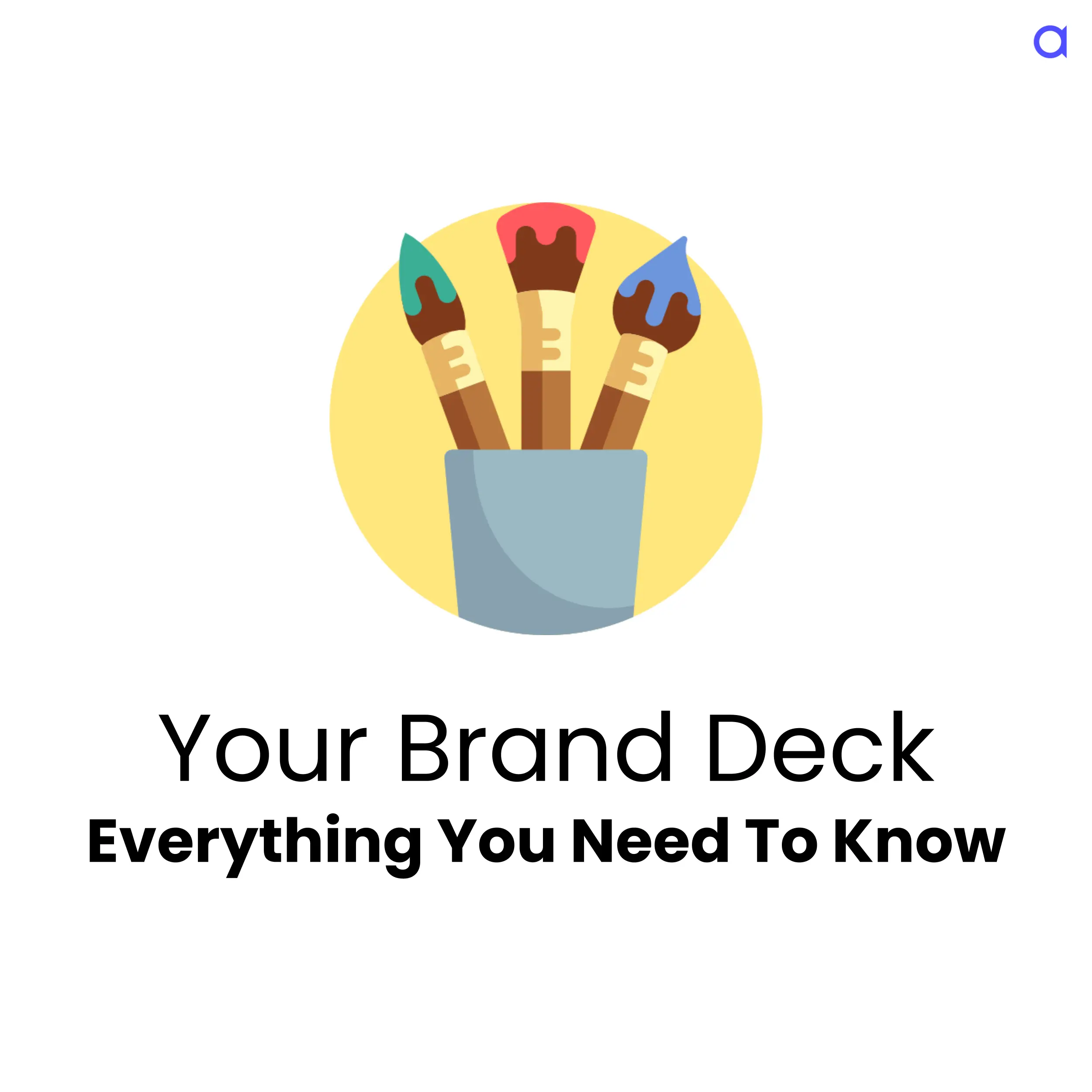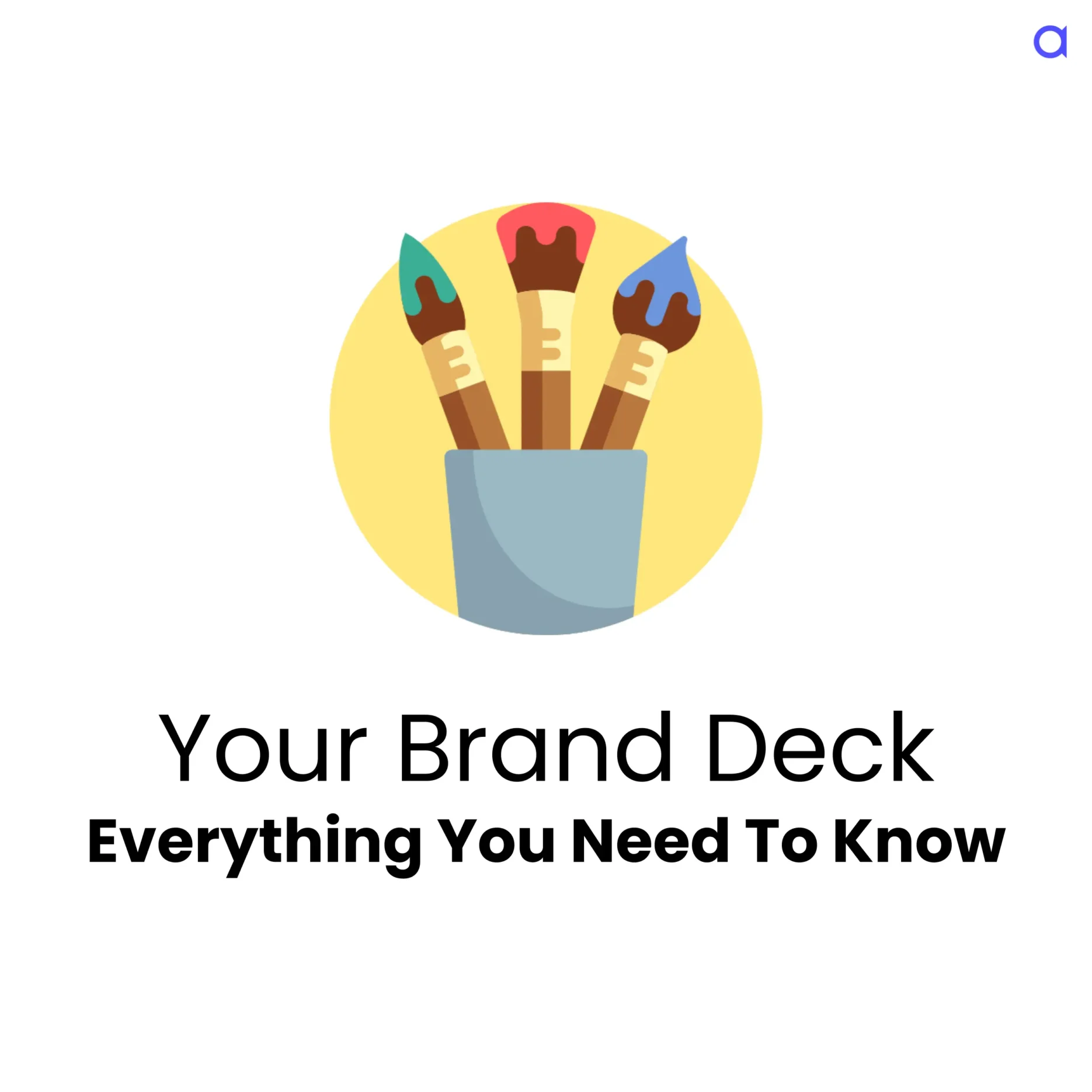
Your brand deck is one of the most important resources you will need to invest in and develop as a company. It is one of the final stages in the funnel for converting leads into clients, allowing you to expand your business.
To make sure you don’t walk into a meeting unprepared, we’ve conducted a comprehensive guide when creating a brand deck.
What is a Brand Deck?
A brand deck is a presentation created to depict what your business is all about. It can be a comprehensive overview of your company or a specific marketing piece that highlights your brand attributes, such as your product or service offerings. It can also reveal your company’s culture, values, and mission.
A brand deck is a great marketing tool that can be used in various ways. It can be shared during face-to-face meetings or posted on your website or social media channels. Their importance lies in providing examples and illustrating your story. A brand deck can generate leads, close deals, and train your employees. It’s an excellent tool for pitching your business to potential clients, getting featured in publications, and growing your organic search engine traffic. It can also be used to communicate with your employees and share information with your partners and suppliers.
How to Build a Brand Deck?
Before you begin creating your brand deck, you’ll need to identify the audience you are trying to reach out to with it. Once you know your audience, you’ll want to have an outline of what you want to include. Make sure to have a brand story and the right visuals.
The brand deck is your storyteller so take time to think about how did the brand start? Where did the idea come from? How/When did your brand become successful? These are just a few questions you can ask yourself to create a brand story. You want to highlight what sets you apart, so take your time and think about the position you want to hold in the industry.
Visuals will make or break your brand deck. People listen with their eyes nowadays, so invest time and resources to create illustrations that tell your story and enhance the point you want. Use images of your company and employees to add that human touch.
Identifying your Audience
Are you presenting your brand deck to a potential lead, a customer, or new hire? Tailor your brand deck based on your answer.
And, no, you can’t have a universal pitch because all those people are interested in different aspects of your business. Plus, you don’t talk to everybody the same way. Your body language, tone, and use of words change based on the person in front of you or on the other side of the call. Remember that when writing your brand deck and pick your words wisely. You don’t want to sound too formal to a new hire or too sloppy to a customer.
Identify the gaps (if any) in the market. Do your homework on what’s missing, understand the potential gaps, and use demands in the market to make your company unique. An SWTO analysis and a good understanding of your competitors will make this part easy.
Know your client before they become your client. If you plan to present that deck in front of a lead, the more you personalize your pitch, the better. For instance, instead of attaching a dozen case studies that you’ve worked on before, pick one that resonates with their industry and problems and go into detail on how you want to solve that problem.
Creating a Brand Deck Outline and Engaging Story
Start by creating an engaging story. Imagine your brand deck as a novel that will draw your audience in and keep them interested until the end. Before you start putting it together, you’ll want to ensure you have a clear objective. What do you want to achieve with your brand deck? What do you want your audience to know after viewing the deck? Once you have an objective, you can start deciding what to include in your brand deck and working on that outline.
The outline provides the essential content that will be included in a presentation. It contains the key points and topics for each section of your presentation. Think of them as titles for every point you’ll make. Having a well-structured outline will not only help your audience have a better understanding of your pitch but also will help you to identify the most critical aspects of your business.
Here’s a simple outline to get you started:
- Your mission statement or why you exist
- About us section
- Services and solutions that you offer
- Statistics about your company’s performance, sales, number of employees, etc.
- Social proof, aka case study(s)
- Your values
- Thank you & contact information
The Effective Visual Design
After you’ve created an engaging story and decided what to include in your brand deck, you’ll want to focus on the visual design. You’ll want to ensure that your visuals are consistent with your brand. If you’re targeting enterprises, you can use a more corporate structure. You can use a more casual design if you’re targeting small businesses. If you’re targeting consumers, you can use a more trendy design.
When targeting enterprises, you may use graphs and charts showing financial data. You can also use visuals that indicate a problem, how your solution solves the problem, and how your solution benefits the client. Ensure your visuals are relevant to your industry and current events, such as trending topics.
Especially if you’re planning a speech, minimize the content and use visuals to keep your audience entertained. As we mentioned above, people listen with their eyes.
Choosing the Right Colours
When presenting a brand deck, you probably have one shot at making that impression. So, when the stakes are this high, everything matters. Colors and brand guidelines give personality to your business. When creating a brand deck, ditch the Canva templates and create slides that match your brand; this will show your prospects that you’re serious and run a sustainable business. It can also help your brand awareness journey even if that meeting doesn’t go as planned.
It is critical to understand which colors will complement the demographics and personalities of the customers, as well as the company’s values. Brand colors that stand out yet do not distract the viewer from the company’s message are the best. If you have a playful brand, try to tone it for more formal prospects (CEOs, Biz people, etc.). For instance, use a white background and your primary colors for graphs and other visuals, or highlight keywords and numbers with your secondary colors.
Outline the Next Steps
You may have nailed your brand deck, but what’s next? This part is often overlooked. If your prospect decides to employ you, what are the next steps, and when will they hear from you next?
Outlining the following actions will even further enhance that they made the right decision and build that trust. So don’t look over this. Make sure you’re ready for any reaction and give a timeframe for beginning work if you are successful, as well as any critical milestones and onboarding steps. Avoid forcing the prospect into any action and give options instead. Give contact information to relevant people from your team who can assist in any way they need during that decision-making time.
Be Prepared for Q&A Time
It’s most likely that your audience will take the time to process the information you provided and will have additional questions and/or concerns. That buyer journey doesn’t start and stop with a brand deck (unfortunately). So be prepared for any question that might come your way. The best way to do that is to learn about the prospect, their business, and the industry. Also, refer to prior similar meetings and the questions that might have come up in the past.
Bring the right people with you to ensure you have all the answers and that you’ll kill that presentation. As a general rule, there can be up to three representatives from your company – ideally two. This will allow the talk to be smooth and alternatively while having some variety to the pitch. The right people can pick up on anything that might leave your mind and do that extra research on the client.
Finally, the brand deck is not to showcase your company’s success but to show how your company can solve your audience’s problems. Get in their shoes, and you will for sure ace this deck.
Meet The Author Of This Article

Hi! I’m Elsa
I’m a Growth Marketer focusing on growing B2B tech companies with a background in content creation and brand awareness.
I progressively work on brand, business, and team growth to help companies achieve their goals. I’m currently using content writing to share my own personal growth path and experience.





